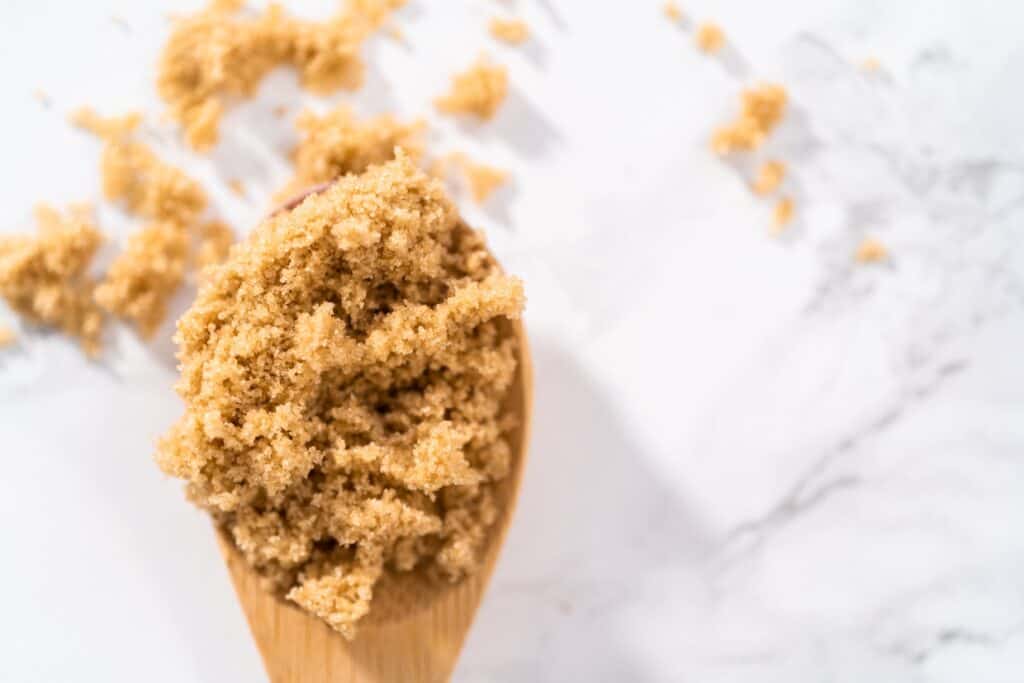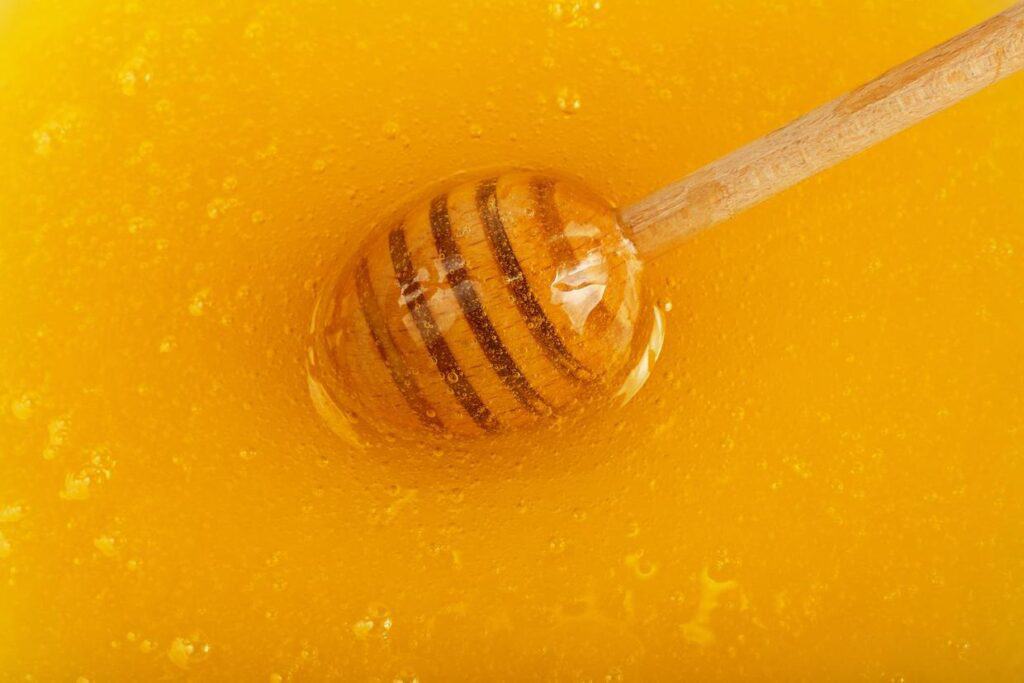What happens when you’re all ready to bake and discover you’re out of brown sugar? There’s no need to run to the store; just grab one of these brown sugar substitutes, and you’ll be on your way to delicious baked goods in no time.

Having the actual ingredient is ideal but not always possible. If you’re in a pinch, try one of these substitutes so you don’t have to run to the store.
Why brown sugar is necessary
Brown sugar gives certain qualities to baked goods, desserts and glazes. Here are some reasons why brown sugar is needed:
- It adds flavor to baked goods.
- Brown sugar helps to prevent cookies and cakes from drying out.
- It adds moistness to baked goods.
- Brown sugar makes baked goods like cakes softer.
- It adds density.
- Brown sugar is acidic, so when combined with baking soda, it makes cookies thick, puffy and soft. If baked longer, they will be crunchy.
- When brown sugar is creamed with sugar, it creates cookies that rise less and spread more. They also stay moist and chewy because less moisture escapes through steam.
- If brown sugar is combined with soft or melted butter, it speeds up gluten development, and the dough sets quickly, making cookies thick and chewy.
Common brown sugar substitutes
Brown sugar substitutes can change the flavor, texture or consistency of a recipe. Having the exact ingredient a recipe calls for is ideal but not always possible. You can use most of these substitutes in a one-to-one ratio to replace brown sugar.
White sugar

White sugar has less moisture than brown sugar, so your cookies or baked goods will turn out crispier. The flavor will also be slightly different.
Make your own
Brown sugar is made with granulated sugar and molasses, so you can easily make your own. Stir together 1 cup of granulated sugar and 1 tablespoon of molasses until combined.
“When I’m baking and run into the last minute ‘oh, no! I don’t have brown sugar!’ I don’t panic. I use one tablespoon of molasses with a cup of granulated sugar and mix it with a spatula until it’s completely incorporated, and it works perfectly every time.”
— Michelle Price, Honest and Truly
Muscovado sugar
Muscovado sugar contains more molasses than brown sugar, so it is darker and more flavorful. Because it has more molasses, it is stickier and clumps more easily. It’s best to sift it to remove any clumps before adding it to your dough or batter. Light muscovado sugar is the closest in flavor to brown sugar.
Coconut sugar
Coconut sugar is made from the sap of coconut trees and is similar in flavor to brown sugar. It doesn’t hold as much moisture as brown sugar which can change the texture of baked goods and make them drier or more dense. To add moisture, add some butter or oil to your recipe. You can also melt the coconut sugar on the stove before adding to your recipe.
Turbinado sugar
Turbinado sugar is made from sugar cane that is boiled to thicken and crystallize the sugar. It is lighter in color than brown sugar, so your baked goods will have a paler appearance. The taste will be slightly different since the flavor is more subtle than when using brown sugar. Turbinado sugar also has larger crystals, so it may take longer to break down and melt in your baked goods.
Date sugar
Date sugar is made from ground, dehydrated dates. It has a rich caramel flavor but is slightly sweeter and drier than brown sugar, so you may want to add more liquid to your recipe. Date sugar also adds a dried fruit flavor, so it’s best in recipes that contain spices or chocolate.
Honey

Honey can be used as a brown sugar substitute, but you will need to reduce the liquid in the recipe. You can also add a few more tablespoons of flour or a half teaspoon of baking powder to reduce the density. You will need two-thirds of a cup of honey for every 1 cup of brown sugar the recipe calls for.
Maple syrup
Maple syrup has a caramel, toffee-like flavor and works best in baked goods like pumpkin bread or sauces and glazes. To use it, use three-quarters of a cup of maple syrup for every cup of brown sugar the recipe calls for. When adding to baked goods, reduce the other liquids — like water or milk — in the recipe by 3 or 4 tablespoons for every three-quarters cup of maple syrup you add.
Agave nectar
Agave nectar has a neutral taste, so it doesn’t add additional flavors. Use two-thirds of a cup of agave nectar for every cup of brown sugar your recipe calls for. Reduce the other liquids in your recipe by one-third of a cup due to the extra liquid you’re adding. Agave nectar will also brown your baked goods faster than brown sugar, so reduce the oven temperature slightly and bake a little longer.
Applesauce
Applesauce is not as sweet as brown sugar, but it can be used in its place. Reduce the other liquids in the recipe by 2 tablespoons due to the extra liquid it will add. Applesauce is best for baked goods like banana bread or cakes.
Brown monkfruit sweetener
Brown monkfruit sweetener has a caramel-like taste and moisture content similar to brown sugar. It works best in cookies, pies and sauces but can be used in any recipe that calls for brown sugar. Brown monkfruit sweetener has zero net carbs and zero calories, so it works well for people who are following keto, diabetic or paleo diets.
Raw sugar
Raw sugar is brown in color but contains very little molasses. You will have to add some extra liquid to your recipe to make up for the missing moisture. The coarse sugar crystals don’t mix into the batter or dough as well as brown sugar does, so it may have a grainy texture. You can partially dissolve the raw sugar in a small amount of warm liquid before adding it to your batter. Another option is to use a spice grinder to manually grind the sugar crystals into a finer texture.
Final thoughts
When using a brown sugar alternative, it’s important to remember that the recipe may not turn out exactly like the original. Although the texture and flavor might be slightly different, these substitutes work well if you follow the directions carefully.
Heidi is a Certified Elementary School Teacher in the Inland Northwest and has been teaching for 17 years. She is also a vintage recipe blogger at Real Life of Lulu, where she focuses on recipes that are at least 50 years old, many from her grandparents’ kitchens. When she isn’t teaching or baking, she loves spending time with her husband and three kids.